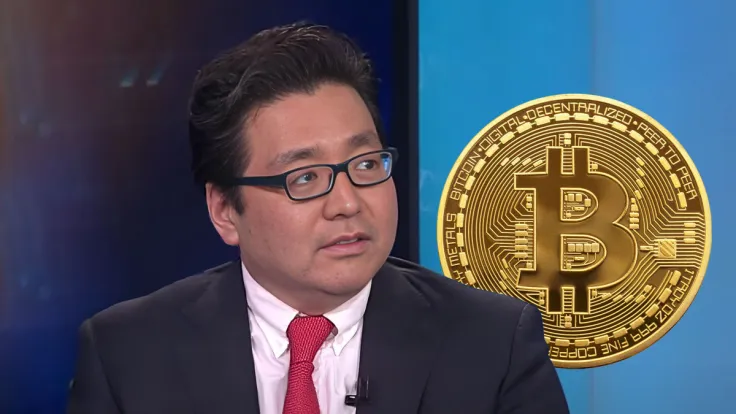
Tom Lee, a prominent figure in the cryptocurrency world, has pinpointed the introduction of Bitcoin exchange-traded funds (ETFs) as a pivotal factor propelling the price of Bitcoin upwards.
This development, making Bitcoin accessible through traditional brokerage accounts, marks a significant milestone in the digital currency's journey towards mainstream acceptance.
Lee highlighted the importance of this advancement, stating, "I think it is a wonderful development because it is allowing people to really have exposure without having to necessarily store their private keys. And I think it was great to see that subtle reference at the Super Bowl," referring to an incident where Twitter founder Jack Dorsey was seen wearing a "Satoshi" shirt, drawing public attention to Bitcoin during one of the most-watched events of the year.
A "new era"
The cryptocurrency market is witnessing a remarkable shift as Bitcoin surpasses the $50,000 threshold, with search interest showing a divergent pattern.
This occurrence signals a potential new era for the cryptocurrency's market dynamics, where the asset's financial performance is not directly correlated with public interest measured by Google searches.
Analysts, including Yassine Elmandjra of ARK Invest, see this as an indication of the market's maturation, suggesting a shift towards institutional investment and utility-driven adoption over retail speculation.
Tom Lee's astonishing price prediction
Tom Lee, co-founder of Fundstrat Global Advisors, previously made headlines with his bullish Bitcoin price predictions during a CNBC interview.
Lee predicted that Bitcoin could reach $150,000 within the next 12 months and astonishingly climb to $500,000 within five years. His optimism is based on the analysis of Bitcoin's finite supply and the anticipated surge in demand.
Despite acknowledging the broader economic risks, including a low but significant chance of a recession, Lee's analysis points towards a bright future for Bitcoin, underpinned by a shift in economic indicators and Federal Reserve policies.

 Dan Burgin
Dan Burgin Vladislav Sopov
Vladislav Sopov U.Today Editorial Team
U.Today Editorial Team